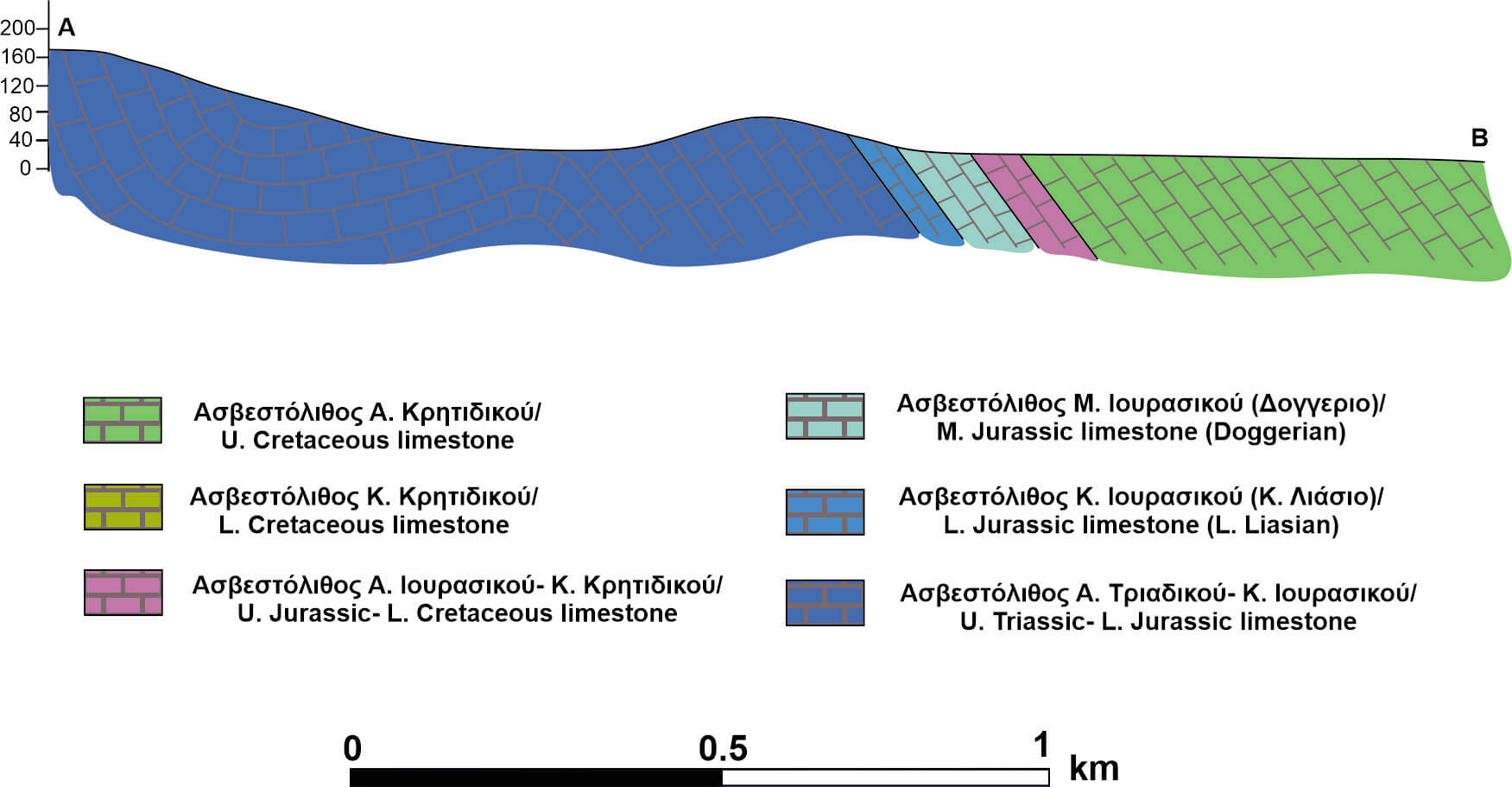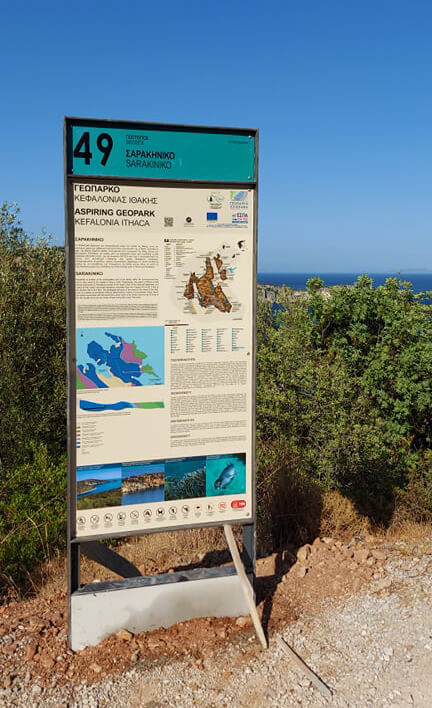Sarakiniko (Figure 1) is located at the southeastern part of the island, within the homonymous bay, and is very close to the capital of Ithaca, Vathi. Geologically, the island of Ithaca is built almost exclusively by formations (rocks) of the Ionian Zone of the External Hellenides, and mainly by the Ionian carbonate sequence deposited from the Triassic (251.9-201.3My) to the Eocene (56.0-33.9 My). The geological structure of the island is the result of the influence of a series of successive tectonic deformations, mainly of compressive nature, which are mainly associated with the placement of the rocks of the Ionian zone on top of those of the Pre-Apulia Zone (via the Ionian thrust) during the Lower Pliocene.

Geodiversity
The latter is responsible for the emergence of the island and the formation of folds, as well as the activation of older faults. The Kefalonia Transform Fault (KTF) also plays an important role in this compression trend, which characterizes the island. The main part of this fault, is located west of Kefalonia. It is a right lateral strike-slip fault, with a northeast orientation and is about 90 km long. This fault extends northeast to the west coast of Lefkada. The peculiarity of the steep coastline of Sarakiniko lies in the fact, that we have the opportunity to observe this compression, which is reflected in the strongly folded and inclined rocks (Figure 2).

Due to the high inclinations, almost the entire lithological sequence of the Ionian zone that prevails on the island of Ithaca is presented here. Specifically, the sequence of rocks, from the oldest to the youngest rocks, begins with an U.Triassic (237-201.3My) – M.Lias (190.8-182.7My) carbonate sequence, which covers the largest part of the area, in respect to the other formations of the Ionian zone. Then it is followed by the U. Lias (182.7-174.1 My) Ammonitico Rosso formation. Subsequently, lithological formations of Dogger age (174.1-163.5 My) are found. The sequence ends with the appearance of the U. Jurassic - L. Cretaceous (163.5-100.5 My) thin bedded limestones with intercalations and condyles of cherts, followed by brecciated limestones of U. Cretaceous age (100.5-66 My)(Figure 3&4).


Biodiversity
The coastal and sea zone around Ithaca Island is an important area for Mediterranean Monk Seal (Monachus monachus). Constant populations of individuals live in that area. Several cetacean species applications and the loggerhead turtle (Caretta caretta) are also occasional visitors. The sea zone comprises extended Posidonia beds (Posidonia oceanica) in very good conservation status, large shallow inlets and bays, marine caves and sea cliffs.


